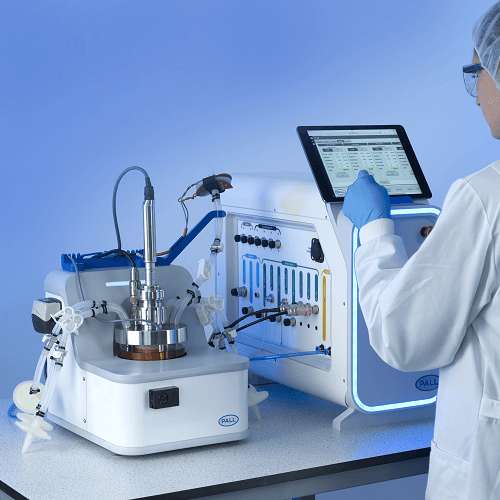
Blog
Streamlining Gene Therapy Viral Vector Production
A robust, scalable method for the manufacture of lentiviral vectors using fixed-bed bioreactor and advanced filter plate technology
November 18, 2021
Self-inactivating lentiviral vectors (LVVs) are a powerful tool in gene therapy, used for the transfection and genetic modification of clinically relevant cell types including the T-cells and hematopoietic stem cells used in cellular gene therapy.
In 2017 the FDA approved the first gene therapy product using this technology, a lentivirus CART-19 vector-based therapeutic for the treatment of acute lymphoblastic leukemia. The number of LVV based therapies entering clinical trials continues to expand, for disorders including leukemia, X-linked severe combined immunodeficiency (XSCID), and beta-thalassemia, amongst others.
The dramatic increase in gene therapy products in development and clinical trials has driven an exponential increase in the demand for LVVs. Historically these have been produced by transient transfection, typically using HEK293T cells in either a suspension or adherent state. Transient transfection is faster than producing a stable cell line but from a drug development perspective it suffers from two major drawbacks: variability between batches and potential plasmid contamination in the final product, either of which can cause problems in securing FDA approval to move a new therapeutic forward into the clinic.
The pros and cons of stable cell lines
The alternative to transient transfection is the generation of stable lentiviral-producing cell lines. This is a more time-consuming process, but with the benefit of providing a consistent LVV product that is far more uniform, contamination-free, and hence FDA-friendly, in turn helping to avoid costly delays and re-work on the path from development to clinic. While stable lentiviral production does have advantages it has traditionally come with two main drawbacks. Typically, stable LVV-producing cell lines have been produced using multi-layer cell factories, but these are both labor-intensive and difficult to scale up as volumes increase when products move from development into clinical trials and full-scale manufacturing. These twin issues of labor and scale-up have historically prevented stable LVV producing cells lines from being more widely adopted.
In a recent publication, Powers et al1 describe a robust, scalable method for the manufacture of LVVs using a fixed-bed bioreactor, the iCELLis® Nano, a small footprint benchtop bioreactor designed for small scale virus production in support of feasibility studies and process and product development. These fully automated, walk-away bioreactors drastically reduce the hands-on time required from operators in maintaining cell lines as compared to traditional cell factories. In addition, scale-up can be achieved all the way up to cGMP manufacturing levels by transitioning the same production processes onto a larger bioreactor.
The authors were able to further reduce the total processing and hands-on time by using AcroPrep™ 96-well filter plates. These high-throughput filter plates have the same footprint as a standard 96-well plate, but instead of a solid base, each well of the AcroPrep filter plate contains a filter. For the LVV production process described here, the authors used AcroPrep filter plates as part of the clean-up of their transfected cells. The use of filter plates, rather than traditional syringe filters, enables the operator to process much larger numbers of samples in a dramatically shorter period of time. Pall manufactures a wide range of AcroPrep filter plates in both 96 and 24-well formats, including low binding, and low leachable filters for the wide variety of filtration and sterilization tasks required in cell culture and protein purification. Find out how AcroPrep filter plates can simplify and accelerate your workflow on our application pages.
The authors compared cell lines prepared on a packed-bed bioreactor with the same cells produced on a traditional multi-layered cell factory and were able to demonstrate a high level of concordance between the LVV’s produced by the two different processes. It is gratifying to see a new process like this that addresses some of the key bottlenecks in cellular gene therapy and takes us one step closer to novel treatments for diseases, many of which have only limited therapeutic options at the current time.
References
1. Alicia D. Powers, et al. Lentiviral Vector Production from a Stable Packaging Cell Line Using a Packed Bed Bioreactor. Molecular Therapy: Methods & Clinical Development Vol. 19 December 2020. https://doi.org/10.1016/j.omtm.2020.08.010.
Thank you for signing up
Thank you for signing up to the Biotech Blog.






